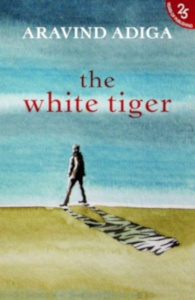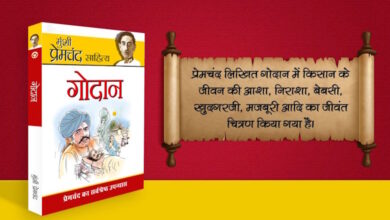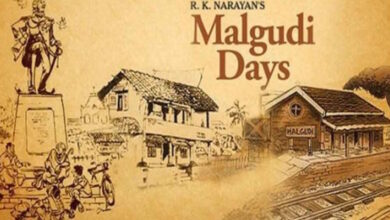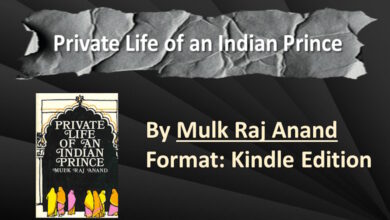The White Tiger (H25) by Aravind Adiga – Book Review
The White Tiger by Aravind Adiga – Book Review for Indian Readers
 In the ever-evolving landscape of Indian literature, The White Tiger by Aravind Adiga shines as a bold, thought-provoking, and brutally honest piece of fiction. Winner of the Man Booker Prize in 2008, this novel isn’t just a story—it’s a mirror to Indian society. Set against the backdrop of poverty, corruption, class divide, and ambition, the book challenges you to reflect on what India truly is beneath its glittering growth.
In the ever-evolving landscape of Indian literature, The White Tiger by Aravind Adiga shines as a bold, thought-provoking, and brutally honest piece of fiction. Winner of the Man Booker Prize in 2008, this novel isn’t just a story—it’s a mirror to Indian society. Set against the backdrop of poverty, corruption, class divide, and ambition, the book challenges you to reflect on what India truly is beneath its glittering growth.
About the Author: Aravind Adiga
Aravind Adiga, an Indian-born writer and journalist, was born in Madras (now Chennai) in 1974. Having studied at Columbia University and Oxford, Adiga blends an international perspective with a deep understanding of the Indian socio-political landscape. His debut novel, The White Tiger, made a massive impact by winning the Man Booker Prize and established him as a fearless voice in modern Indian fiction.
The White Tiger Plot Summary – A Rooster Coop That Must Be Broken
The novel is presented in the form of a series of letters written by the protagonist, Balram Halwai, to the Chinese Premier, Wen Jiabao, who is visiting India. Balram, a poor villager from Laxmangarh, writes these letters to explain how he rose from being a poor servant to a successful entrepreneur in Bangalore.
Balram refers to himself as a “White Tiger”—a rare creature that comes once in a generation, symbolizing his uniqueness in breaking free from the chains of class and servitude. Born in crushing poverty, Balram is intelligent and ambitious. After getting a job as a driver for a rich landlord’s son, Ashok, and moving to Delhi, he becomes exposed to the corrupt and unequal system that governs modern India.
Disillusioned by the harsh realities of servitude, and tired of being invisible, Balram makes a shocking decision—he murders his master and steals the money to start his own taxi business in Bangalore. The novel follows his journey from innocence to crime to ultimate self-made success.
Key Themes in The White Tiger
1. Class Divide and Inequality
At its core, The White Tiger is a powerful commentary on the deep divide between India’s rich and poor. The “two Indias”—one of light (wealth, technology, education) and one of darkness (poverty, oppression, ignorance)—are portrayed through Balram’s journey. This theme hits home for many Indian readers who witness these divides every day.
2. Corruption and Hypocrisy
From political bribes to dishonest employers, Adiga doesn’t hold back in showing how corruption eats into the foundation of Indian society. Even the so-called “good” characters, like Ashok, contribute to the toxic system. The book reminds us that the rot is systemic, and often, morality is a luxury the poor can’t afford.
3. Individual Freedom vs. Social Slavery
Balram repeatedly refers to the idea of the “Rooster Coop”—a metaphor for the mental slavery that prevents India’s poor from rising. Despite having the physical means, most are trapped by fear and loyalty. Balram breaks free, but at a moral cost, raising uncomfortable questions about what freedom truly means.
4. Ambition and Self-Made Identity
Balram’s character is deeply ambitious. He does not accept his “fate” of being a servant. His journey from a village boy to a business owner in Bangalore symbolizes the aspirations of millions of Indians. However, the means he uses to achieve his success is what makes the reader question the price of ambition.
Writing Style and Language
Aravind Adiga’s writing is direct, witty, and biting. The use of the epistolary format (writing in letters) gives the novel a personal, confessional tone. The language is simple yet impactful, which makes the book very accessible even to readers who aren’t fluent in high-level English.
The conversational tone, laced with sarcasm, dark humour, and sharp observations, gives Balram’s voice an authenticity that connects deeply with readers. It feels like you’re listening to someone speak their heart out without any filters.
Character Analysis The White Tiger
Balram Halwai
Balram is not your typical hero. He’s both victim and perpetrator. His intelligence, frustration, and inner conflict make him a layered character. While his final act of murder is morally questionable, Adiga never justifies it but rather explains what drove Balram to such an extreme.
Ashok
Ashok represents the educated, well-meaning but ultimately hypocritical class. He is kinder than most rich characters in the book but still exploits the system for his benefit. His inability to truly understand the lower class makes him a symbol of passive privilege.
Balram’s Family and The Village
Balram’s background in Laxmangarh showcases the grip of traditional family control, caste oppression, and a complete lack of opportunity. His decision to leave them behind represents a bigger break from the past and tradition.
Why Indians Should Read This Book
The White Tiger holds a mirror to Indian society—warts and all. For Indian readers, especially the youth, it’s a raw portrayal of how class, opportunity, and ambition interact in real life. It makes you think, question, and see the invisible lives around us.
Moreover, the story is deeply rooted in Indian soil—its streets, its smells, its voices, its corruption. It is not a sugar-coated tale of success, but a realistic, sometimes uncomfortable, look at the cost of freedom in a developing country.
Strengths of the Book The White Tiger
-
Unique Narrative Style – The letter format is fresh and engaging.
-
Deep Social Commentary – Honest look at class, corruption, and power.
-
Relatable Indian Setting – Descriptions of Delhi, Laxmangarh, Bangalore feel very real.
-
Memorable Protagonist – Balram is unforgettable and full of contradictions.
-
Easy to Read – The language is direct and reader-friendly.
Weaknesses (for Some Readers)
-
Morally Ambiguous Hero – Some readers may find Balram’s actions hard to accept.
-
Dark Tone – The novel can feel grim due to its raw portrayal of poverty.
-
Pacing – The middle part of the book may feel slow for readers looking for action.
Comparison with the Film Adaptation
Netflix released a film version of The White Tiger in 2021 starring Adarsh Gourav, Rajkummar Rao, and Priyanka Chopra. While the movie captured the core theme of the novel, it lacked the depth and inner voice that the book offers through Balram’s narration.
Reading the book gives a much more layered, internal journey of the protagonist and provides richer commentary on Indian society. The movie is a good companion piece, but the novel remains the true powerhouse.
Conclusion: Should You Read The White Tiger?
Absolutely yes.
If you’re someone who wants more than just entertainment from a book—if you want to understand India from the eyes of someone at the bottom of the pyramid, The White Tiger is a must-read. It’s powerful, thought-provoking, and deeply Indian. It challenges your morals, makes you uncomfortable, and forces you to think about the unseen realities of our country.
Aravind Adiga doesn’t give easy answers. He makes you sit with hard questions. And that’s the sign of a great book. You can Buy From Amazon.in
FAQs about The White Tiger by Aravind Adiga
1. What is the main message of The White Tiger?
The book explores themes of class inequality, ambition, and freedom. It challenges the idea of morality in a corrupt system and showcases the struggles of India’s poor in trying to break free from oppression.
2. Is The White Tiger based on a true story?
No, it is a fictional story, but it is inspired by real-life issues and societal structures in India.
3. Is the book difficult to read?
Not at all. The language is simple and conversational, making it easy for Indian readers, even those new to English literature.
4. What age group is this book suitable for?
It is best suited for readers 16 and above due to its themes of violence, corruption, and mature content.
5. How is the book different from the movie adaptation?
The movie simplifies many aspects of the book. The novel gives more depth to Balram’s inner thoughts and offers a richer understanding of the societal issues he faces.
White Tiger (H25) Book By Aravind Adiga
FlipToKart Review Score 4.9/5
Total Review Score
If you're someone who wants more than just entertainment from a book—if you want to understand India from the eyes of someone at the bottom of the pyramid, The White Tiger is a must-read. It’s powerful, thought-provoking, and deeply Indian. It challenges your morals, makes you uncomfortable, and forces you to think about the unseen realities of our country.




